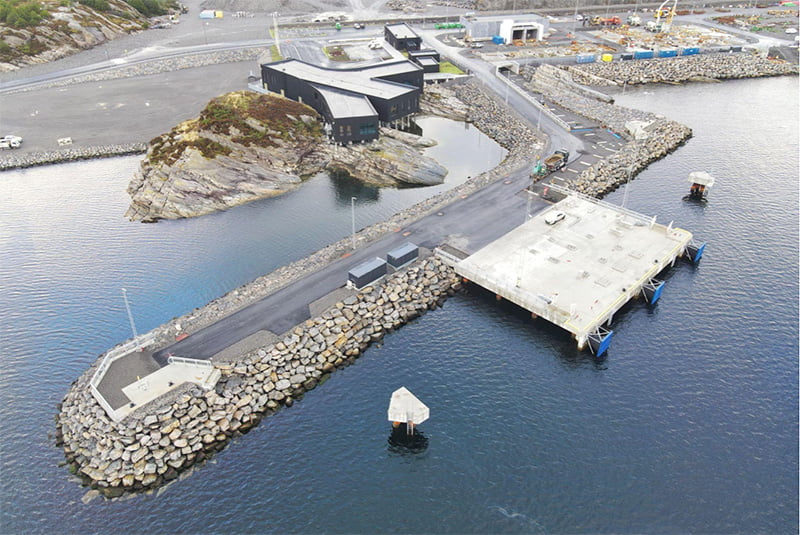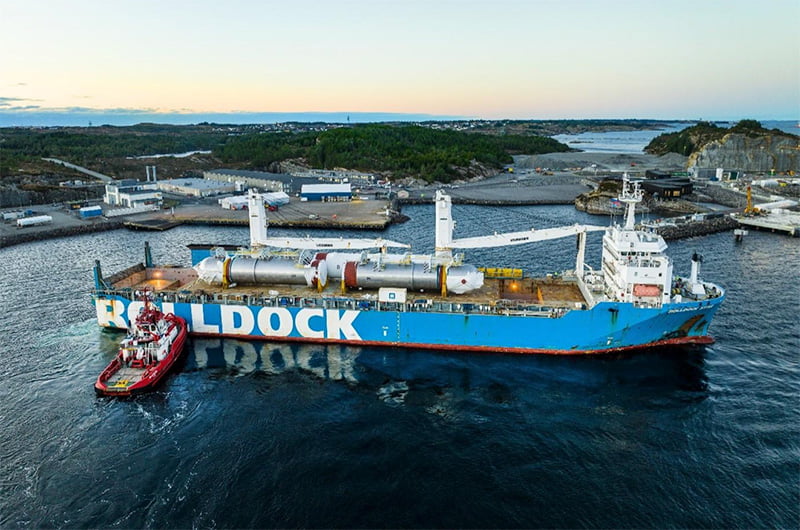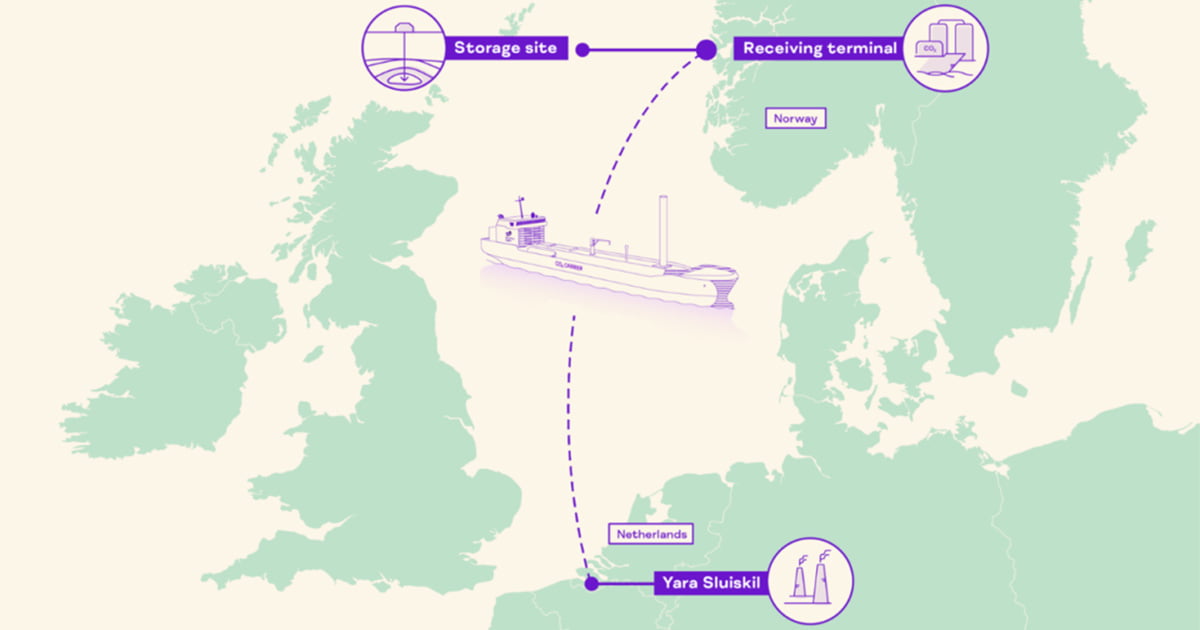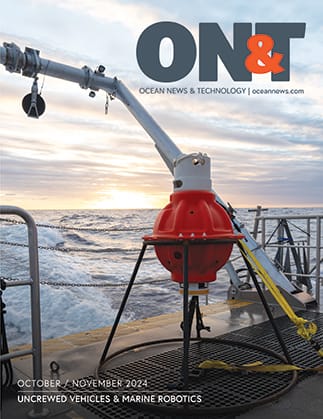In Norway, TotalEnergies, together with Equinor and Shell, has launched the first large-scale CO2 transport and storage project. Approved by the Norwegian government in 2020 and designated as a Project of Common Interest (PCI1) by the European Union, Northern Lights is currently under construction and will eventually enable industrial emitters in Norway and elsewhere in Europe to reduce their CO2 emissions.
In December 2022, Northern Lights received the first 7 of 12 onshore tanks for temporary CO2 storage. The drilling operations for the wells have also recently been completed and the official ceremony to launch the construction of the future vessels occurred on November 21 at Dalian Shipbuilding Industry Co. Ltd. in China.
 1.5 million tons of CO2 stored per year at the Northern Lights site from 2024. Credit: TotalEnergies
1.5 million tons of CO2 stored per year at the Northern Lights site from 2024. Credit: TotalEnergies
Carbon capture and storage operations are scheduled to begin in 2024. The facility is currently under construction and will allow Northern Lights to offer a safe and reliable shipping and storage service to industrial emitters across Europe. With growing interest from industrial sectors in Europe, additional shipping and storage capacity will be developed as demand increases.
1 Defined as key infrastructure projects to complete the European energy market in order to help the EU achieve its energy and climate policy goals.
A first commercial agreement signed
Several companies are interested in using Northern Lights to decarbonize their operations. The first commercial agreement was signed in August 2022 with Yara. Starting in 2025, 800,000 metric tons of CO2 per year will be captured, compressed and liquefied in the Netherlands, then transported to the Northern Lights site, where it will be permanently sequestered in geological layers buried about 2,600 meters below the seabed, off Øygarden in the Norwegian North Sea.
 Image credit: TotalEnergies
Image credit: TotalEnergies
An important step for the decarbonization of heavy industry in Europe
This project, the first of its kind worldwide, is a major milestone in the decarbonization of heavy industry in Europe, paving the way for international CO2 transport and storage as a service. It sets a new standard for European industrial companies looking to use Northern Lights solutions as part of their decarbonization strategies.
Since the agreement was signed, several companies are interested in using Northern Lights to decarbonize their operations. The first commercial agreement was signed in August 2022 with Yara. Starting in 2025, 800,000 metric tons of CO2 per year will be captured, compressed and liquefied in the Netherlands, then transported to the Northern Lights site, where it will be permanently sequestered in geological layers buried about 2,600 meters below the seabed, off Øygarden in the Norwegian North Sea.
Ultimately, the Company’s goal is to develop a CO2 storage capacity of more than 10 million tons per year by 2030, notably through large-scale industrial projects such as Northern Lights in Norway and Aramis in the Netherlands. All these projects will allow the Company to reduce its own emissions as well as those of its customers, in line with our ambition to reach carbon neutrality by 2050, together with society.
Northern Lights Story
- October 2017: TotalEnergies enters the project, alongside Shell and Equinor (Statoil at the time).
- May 2020: TotalEnergies, Equinor and Shell decide to invest in the Northern Lights project.
- December 2020: The Norwegian Government announces its funding decision for the Northern Lights CO2 transport and storage project.
- March 2021: The CO2 transport and storage company Northern Lights JV DA is launched with TotalEnergies, Equinor and Shell as equal partners in the JV.
- October 2021: Northern Lights JV awards contracts for building of two dedicated CO2 carriers to Dalian Shipbuilding Industry Co., Ltd..
- August 2022: TotalEnergies announces the signature of a commercial agreement between Northern Lights and Yara to transport and store CO2 captured from Yara Sluiskil, an ammonia and fertilizer plant in the Netherlands.
- November 2022: End of well drilling operations and official steel cutting ceremony
- December 2022: Northern Lights received the first 7 of 12 onshore tanks for intermediate CO2 storage.
- 2024: Launch of the 1st phase of the project

